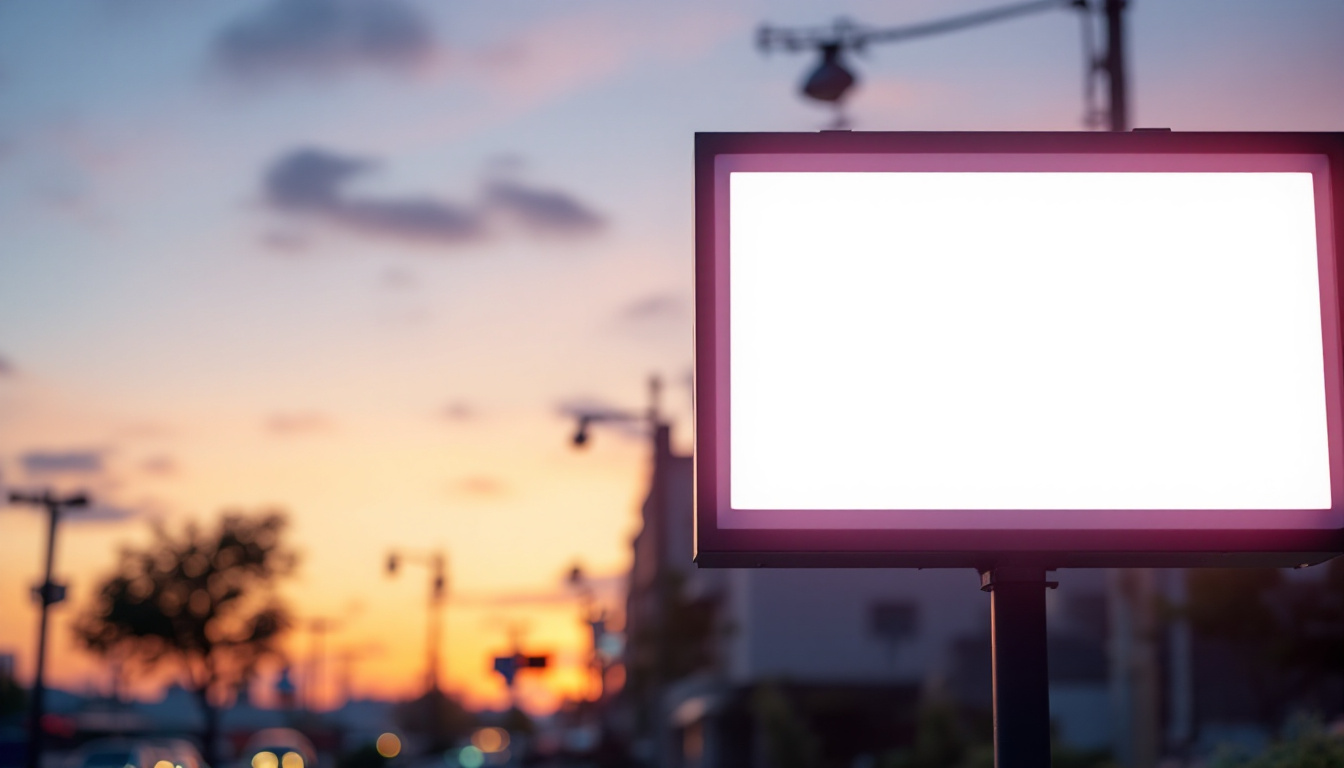
In the ever-evolving world of outdoor signage, LED sign lights have emerged as a popular choice for businesses looking to enhance visibility and attract customers. As a lighting contractor, understanding the nuances of these systems is crucial to providing the best service to clients. This article aims to address some of the most common questions surrounding outdoor LED sign lights, helping contractors navigate this dynamic field.
Outdoor LED sign lights are specialized lighting solutions designed to illuminate signage effectively. These lights utilize light-emitting diodes (LEDs) to produce bright, energy-efficient illumination that enhances visibility, especially during nighttime or low-light conditions. Unlike traditional incandescent or fluorescent lights, LEDs offer longer lifespans and lower energy consumption, making them an attractive option for businesses.
These lights come in various forms, including backlit signs, channel letters, and illuminated displays. Their versatility allows for creative designs that can be tailored to meet specific branding needs. Additionally, many outdoor LED sign lights are weather-resistant, ensuring durability in various environmental conditions. This resilience means that businesses can confidently display their signs in rain, snow, or extreme heat without worrying about damage or reduced performance.
Moreover, the color options available for LED sign lights are extensive, allowing businesses to choose hues that resonate with their brand identity. From vibrant reds and greens to soothing blues and whites, the ability to customize colors enhances the aesthetic appeal of signage, making it more attractive to potential customers. This customization can also include dynamic lighting effects, such as flashing or fading, which can draw even more attention to a business’s offerings.
There are several compelling reasons for choosing LED sign lights over traditional lighting options. Firstly, energy efficiency is a significant advantage. LEDs consume considerably less power than incandescent bulbs, leading to lower electricity bills for businesses. This energy efficiency also translates into a reduced carbon footprint, appealing to environmentally conscious clients.
Another benefit is the longevity of LED lights. Typically, an LED can last up to 25,000 hours or more, significantly outpacing traditional bulbs, which often need frequent replacements. This durability not only saves money on replacements but also minimizes maintenance efforts, making it a win-win for both contractors and clients. Furthermore, the low heat output of LEDs reduces the risk of overheating, which can be a concern with traditional lighting solutions. This characteristic not only enhances safety but also contributes to the overall efficiency of the lighting system.
Additionally, LED technology has advanced to include smart features that can further enhance the functionality of outdoor signage. For instance, some LED sign lights can be integrated with sensors that adjust brightness based on ambient light conditions, ensuring optimal visibility at all times. Others may include programmable settings that allow businesses to change messages or lighting patterns remotely, providing a dynamic way to engage with customers and promote special offers or events. This level of adaptability is something traditional lighting simply cannot offer, making LEDs the clear choice for modern businesses looking to stand out in a competitive market.
When installing outdoor LED sign lights, several key factors must be considered to ensure optimal performance and longevity. First and foremost is the location of the sign. Understanding the surrounding environment, including potential obstructions and the angle of visibility, is crucial. Proper placement can enhance visibility while minimizing glare.
Another important consideration is the power supply. Ensuring that the electrical system can support the LED lights is essential. Contractors should assess the voltage and wattage requirements of the chosen LED fixtures and confirm that the existing electrical infrastructure can accommodate these needs.
Adhering to best practices during installation can significantly impact the performance of outdoor LED sign lights. Start by ensuring that all components are weatherproof and suitable for outdoor use. This includes using appropriate seals and gaskets to prevent moisture ingress, which could damage the electrical components.
Additionally, proper wiring techniques should be employed. Using high-quality, UV-resistant cables can prevent deterioration over time. It’s also advisable to use connectors that are rated for outdoor use to ensure a secure and lasting connection. Lastly, always follow local codes and regulations to ensure compliance and safety.
Maintenance is key to ensuring the longevity and effectiveness of outdoor LED sign lights. Regular inspections should be conducted to check for any signs of wear or damage. This includes examining the fixtures for dirt or debris that may obstruct light output, as well as checking the electrical connections for corrosion or loose wires.
Cleaning the fixtures periodically is also essential. Using a soft cloth and a mild detergent can help maintain clarity in the lenses, allowing for maximum light output. However, it’s crucial to ensure that power is turned off during cleaning to prevent electrical hazards.
Even with proper maintenance, issues may arise with outdoor LED sign lights. One common problem is flickering or dimming lights, which can indicate a power supply issue or a failing LED. In such cases, checking the power source and connections is the first step. If the issue persists, replacing the affected LED module may be necessary.
Another issue that contractors may encounter is uneven lighting. This can occur due to improper installation or misalignment of the fixtures. Adjusting the angle of the lights or repositioning them can often resolve this problem. If the issue is more complex, consulting the manufacturer’s guidelines may provide additional troubleshooting steps.
Understanding the costs associated with outdoor LED sign lights is essential for contractors when providing quotes to clients. The initial investment for LED technology may be higher than traditional lighting options; however, the long-term savings in energy and maintenance costs often justify the expense. Clients should be made aware of the total cost of ownership, which includes installation, energy usage, and replacement costs over time.
Additionally, factors such as the size and complexity of the sign, the type of LED lights used, and any additional features—such as programmable lighting or color-changing capabilities—can all influence the overall cost. Providing a detailed breakdown can help clients make informed decisions.
Many businesses may hesitate to invest in outdoor LED sign lights due to upfront costs. Fortunately, various financing options are available to ease this burden. Some manufacturers and suppliers offer financing plans that allow clients to pay for their LED systems over time, making it more manageable for businesses to upgrade their signage.
Additionally, local governments and utility companies may provide incentives or rebates for energy-efficient upgrades, including LED lighting. Contractors should stay informed about these programs and share this information with clients to help them take advantage of potential savings.
When dealing with outdoor LED sign lights, understanding local regulations is crucial. Many municipalities have specific codes governing signage, including size, brightness, and placement. Contractors must familiarize themselves with these regulations to ensure compliance and avoid potential fines or required modifications after installation.
Additionally, some areas may have restrictions on the use of flashing or animated lights. Understanding these limitations can help contractors guide their clients in making compliant choices that still meet their advertising needs.
To ensure compliance with local regulations, contractors should conduct thorough research before beginning any installation project. This may involve consulting with local planning departments or zoning boards to clarify any specific requirements related to signage.
Documenting all communications and obtaining necessary permits before installation can also help mitigate potential issues. Contractors should maintain a checklist of required permits and approvals to streamline the process and ensure compliance at every stage of the project.
The field of outdoor LED sign lights is continually evolving, with new innovations emerging regularly. One significant trend is the integration of smart technology. Many modern LED systems now offer features such as remote monitoring and control, allowing businesses to adjust their signage from anywhere. This capability can enhance marketing efforts by enabling real-time updates to promotions and messages.
Another trend is the increased focus on sustainability. As environmental concerns grow, manufacturers are developing more eco-friendly LED options, including those made from recyclable materials. These advancements not only appeal to environmentally conscious businesses but also align with global sustainability goals.
Staying informed about the latest trends and technologies in outdoor LED sign lights is essential for contractors to remain competitive. Joining industry associations and attending trade shows can provide valuable insights into emerging products and best practices. Additionally, subscribing to industry publications and online forums can help contractors share knowledge and learn from peers.
Networking with manufacturers and suppliers can also be beneficial. Building relationships with these stakeholders can provide access to exclusive information about new products and innovations, helping contractors stay ahead of the curve.
Outdoor LED sign lights represent a significant opportunity for lighting contractors to enhance their service offerings and meet the evolving needs of clients. By understanding the key aspects of these lighting solutions—from installation and maintenance to cost considerations and regulatory compliance—contractors can position themselves as knowledgeable experts in the field.
As the industry continues to grow and innovate, staying informed about trends and advancements will be crucial for success. Embracing these changes and addressing common questions will not only benefit contractors but also lead to satisfied clients who can effectively leverage outdoor LED sign lights to enhance their visibility and brand presence.
Ready to elevate your lighting game with the most efficient and cost-effective solutions? Look no further than LumenWholesale for all your outdoor LED sign light needs. Our spec-grade lighting products are designed to give you the edge in quality and price, ensuring your projects shine without straining your budget. Say goodbye to middlemen and hello to hassle-free bulk buying with free shipping. Don’t compromise on quality or value—choose LumenWholesale for Wholesale Lighting at the Best Value and light up your clients’ world with confidence.

Discover the essentials of shunted vs. non-shunted sockets in lighting systems with our comprehensive guide tailored for lighting contractors.

Discover how light pendant chandeliers can boost lighting contractors’ success with innovative designs, key benefits, and industry insights—transform your projects today!.

Discover how solar power wall mount lights are revolutionizing the lighting industry for contractors.

Discover how Hi-Lite technology is transforming the lighting industry by significantly reducing costs for contractors.